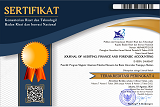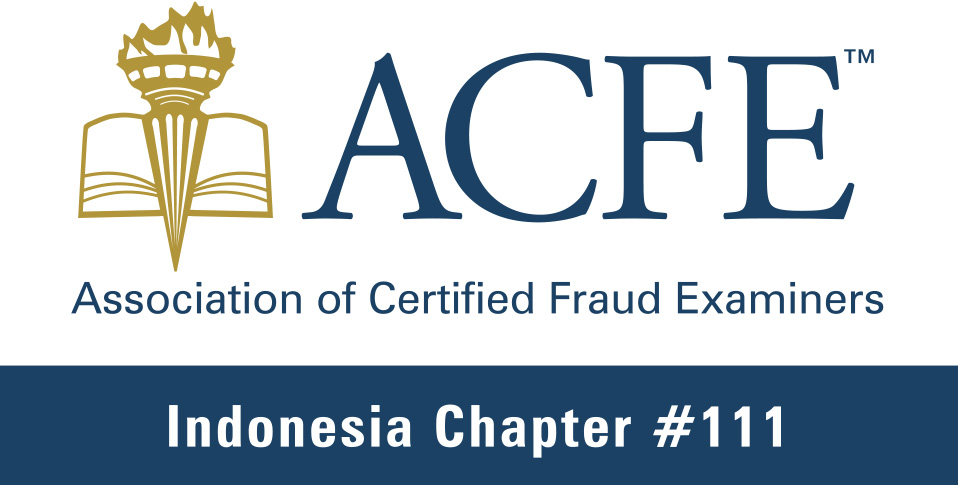FINANCIAL PERFORMANCE ASSESSMENT AND TAXPAYER COMPLIANCE TEST IN USING TOTAL BENCHMARKING AT PHARMACEUTICAL COMPANIES
Abstract
This study aims to:1) to determine whether there is a difference between the ratio of pharmaceutical companies from 2011-2015 with the total benchmarking ratio established by the Directorate General of Taxes; 2) to know the total use of benchmarking ratio in testing taxpayer compliance. The sample used is the annual report of 7 pharmaceutical companies listed in Indonesia Stock Exchange (BEI) for the period of 2011 - 2015. Data analysis in this study was conducted by: 1) Calculated the average of 12 ratios, i.e GPM, OPM, PPM, CCTOR, NPM, DPR, salary, lease, depreciation, other input ratios, non-operating income ratio, and off-business cost ratio; 2) Identified the difference of each ratio with benchmarking ratio by using Independent Test Sample T-test; 3) Analyzed the ratios below and above the total benchmarking ratio; 4) Used the Total Benchmarking Ratio to detect Tax Evasion. The results show the ratio of GPM, OPM, PPM, NPM, salary, rent, and other inputs, different not significant. While the ratio of CCTOR, DPR, depreciation, non-business income and non-business costs, is significantly different from the total benchmarking ratio. The use of benchmarking ratios to test taxpayer compliance resulted in recommendations to focus further analysis on accounts relating to material purchases and use, as well as non-business income and expenses.
Keywords
Full Text:
PDFReferences
Andrias, Mely Agustina & Tjondro, Elisa.2013.Analisis Indikasi Tax Evasion dengan Rasio Bancmarking di Sektor Pertambangan 2010-2012 Dibandingkan dengan yang Ditetapkan DJP dan Relevansinya dengan Kondisi Saat ini.Tac & Accounting Review, 1 (2).
Anonim.2016.Menkeu:Tax Ratio Indonesia di Bawah Standar (online) http://www.kemenkeu.go.id/Berita/menkeu-tax-ratio-indonesia-di-bawah-standar.Retrieved on December 18, 2016
Damayanti, T.W.2004.Pelaksanaan Self Assesment System Menurut Wajib Pajak (Studi Kasus Pada Wajib Pajak Badan Salatiga).Jurnal Ekonomi dan Bisnis.X (1):109-128
Damayanti, Theresia Woro & Adiritonga, Eko Sukmono.2011.Ratio Total Benchmarking Sesuaikah Dengan Kondisi Wajib Pajak?(Studi Pada Empat Perusahaah Rokok Yang Terdaftar Di BEI).Seminar Nasional Ilmu Ekonomi Terapan Fakultas Ekonomi UNIMUS
Darmayasa, Nyoman & Hardika, Nyoman Sentosa.2011.Perencanaan Pajak dari Aspek Rasio Total Benchmarking, Kebijakan Akuntansi, dan Administrasi Sebagai Strategi Penghematan Pajak.Jurnal Bisnis dan Kewirausahaan, (7) No.3 Nopember 2011.
Mardiasmo.2009.Perpajakan.Jakarta: Andi
Resmi, Siti.2016.Perpajakan: Teori dan Kasus.(Edisi 9 Buku 1).Jakarta:Salemba Empat.
Rusydi, M.Khoiru & Kusumawati, Alfiah.2010.Manajemen Perpajakan dan Analisa Deteksi Dini terhadap Tax Evasion Melalui Metode BencMark.Jurnal Aplikasi Manajemen, 8 (3):877-886
Santosa, W.2008.Analisis Risiko Ketidakpatuhan Wajib Pajak sebagai Dasar Peningkatan Kepatuhan Wajib Pajak.Jurnal Keuangan Publik.5 (1):85 -137.
Sarjono, Bayu.2014.Total Benchmarking Sebagai Alat Menilai Kewajaran Laporan Keuangan dan Pemenuhan Kewajiban Perpajakan.Jurnal Akuntansi AKRUAL, 6(1):1-16
Suwandi, Early.2016.Perencanaan Pajak.Jakarta:Salemba Empat
Syafi’i.2013.Rasio Total Bencmarking sebagai Indikator Tingkat Kepatuhan Wajib Pajak (Studi Kasus pada PT Semen Gresik (Persero), Tbk.Jurnal WIGA, 3 (1)
Surat Edaran No.96/PJ./2009 tentang Rasio Total Benchmarking dan Petunjuk Pemanfaatannya
Watson, H Gregory.(1997).Strategic Benchmarking, Jakarta:Gramedia Pustaka Utama.
DOI: https://doi.org/10.21107/jaffa.v5i2.3766
Refbacks
- There are currently no refbacks.
Our Journal indexed by:
Our support tools using:



This work is licensed under a Creative Commons Attribution 4.0 International License.












